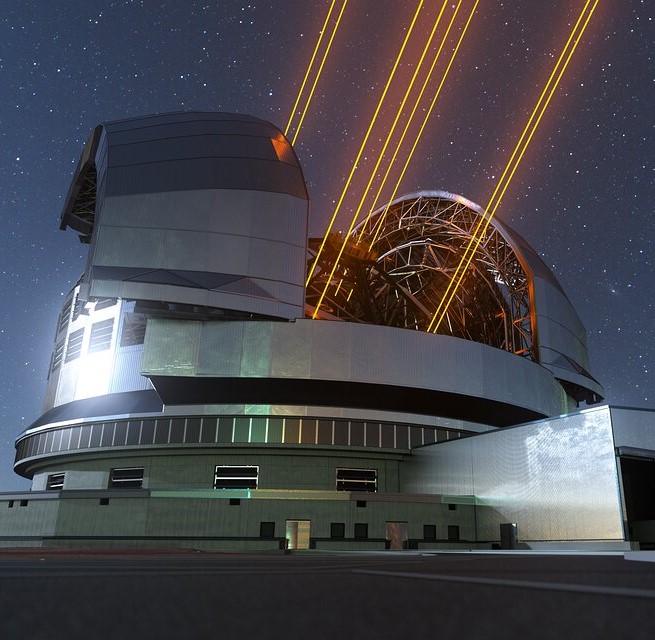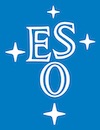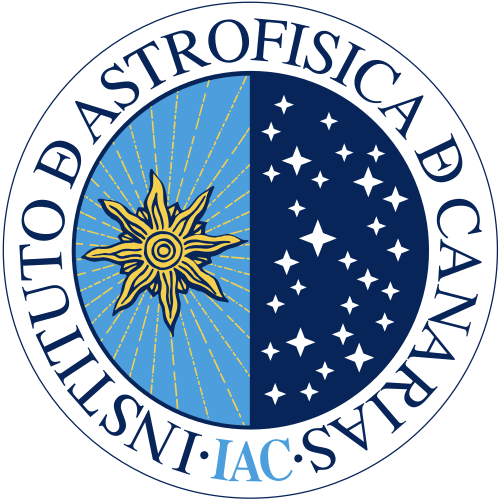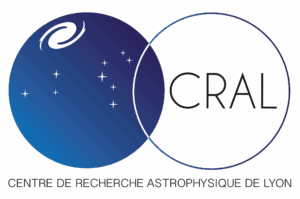Building the Future of Ground-Based Spectroscopy
The Centro de Astrobiología leads the development of critical subsystems for HARMONI, the first-light integral field spectrograph that will unlock the scientific potential of ESO’s 39-meter Extremely Large Telescope.
What is HARMONI?
HARMONI is a visible and near-infrared integral field spectrometer (0.46–2.45 μm) that will serve as the Extremely Large Telescope’s core spectroscopic capability from first light. Operating as a workhorse facility instrument, HARMONI addresses the ELT’s most compelling science cases across diverse astrophysical domains.
Spectroscopic Capabilities:
With approximately 31,000 simultaneous spatial elements (spaxels) at near-IR wavelengths and 15,500 at visible wavelengths arranged in a 1.3:1 aspect ratio, HARMONI enables efficient "nodding-on-IFU" sky subtraction techniques. Resolving powers span R~3,000 to R~17,000, providing flexibility for ultra-sensitive to diffraction-limited observations. .
Technical Excellence:
High throughput optical design (≥30% average) ensures maximum photon efficiency. Multiple spatial scales (ranging from 4 to 60 milliarcseconds per spaxel) and spectral configurations enable optimal instrument setup for diverse science programs. The conceptually simple design, based on proven technology, requires no significant R&D and provides "point and shoot" spectroscopic capability.
Synergies and Unique Capabilities:
HARMONI complements and synergizes with ALMA (similar angular resolution) and JWST (comparable sensitivity) while occupying unique parameter space: diffraction-limited, medium to high-resolution imaging spectroscopy from visible to near-infrared wavelengths unavailable at any other facility including TMT or GMT..
CAB SUBSYSTEMS
Calibration Module (CM)
The Calibration Module subsystem (CM) is part of the CARS, Calibration and Relay System, which provides the necessary functions to deliver the telescope image to the instrument’s detectors in a calibrated form. The calibration module is the subsystem responsible for injecting the calibrated light into the system (eliminating disturbances introduced by the instrument itself), provides calibration parameters for the wavefront sensors and is located just in front of the telescope’s focal plane.
Low Order Wavefront Sensors (LOWFS)
The ‘Low Order Wave-Front Sensors’ subsystem is part of the NGSS (Natural Guide Star Sensors) system and is intended to provide natural guide star detection for the LTAO and NoAO modes of operation. It has 3 wavefront sensors, the SGS (Secondary Guiding Sensor) for NoAO, and TruthS (Truth Sensor) and TTFS (Tip-Tilt-Focus Sensor) for LTAO. All sensors receive the necessary light through a mirror mounted on a Pick-Off Arm (POA), which patrols the entire technical field of the 2 arcminute instrument.

International Collaboration The HARMONI Consortium
HARMONI is developed by a partnership of leading European and American
institutions, combining decades of expertise in instrumentation, adaptive
optics, systems engineering, and detector technology.
Consortium brings together world-class teams from the UK, France, Spain, and the United States, operating under a Consortium Agreement within the ESO Contract framework. Collaborating Institutions:
- University of Oxford
- UK Astronomy Technology Centre (UK ATC)
- University of Durham
- Laboratoire d’Astrophysique de Marseille (LAM)
- Centre de Recherche Astrophysique de Lyon (CRAL)
- Instituto de Astrofísica de Canarias (IAC)
- Centro de Astrobiología (CAB)
- University of Michigan
- European Southern Observatory (ESO)








Science Cases
Discover the diverse range of astrophysical questions HARMONI will address—from the physics of supermassive black holes to the chemical evolution of galaxies across cosmic time.
